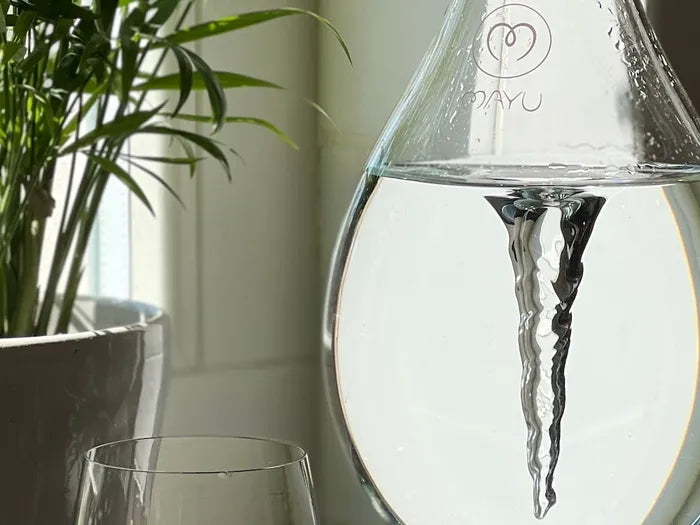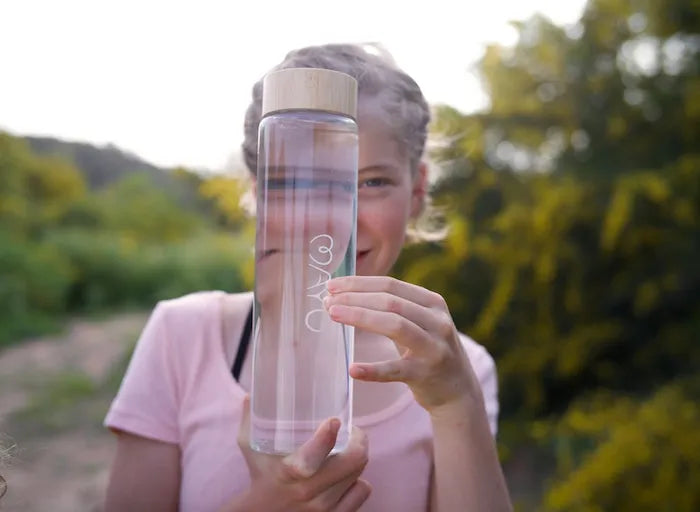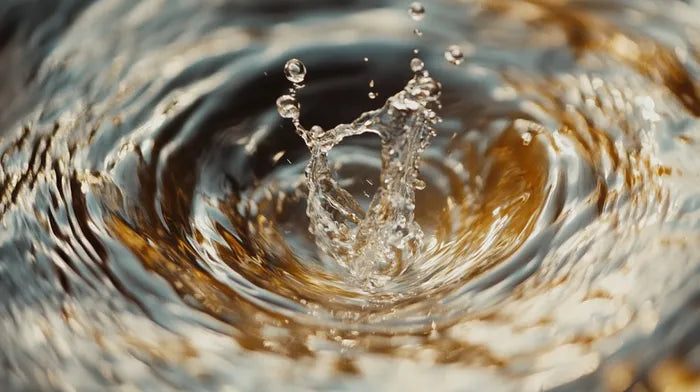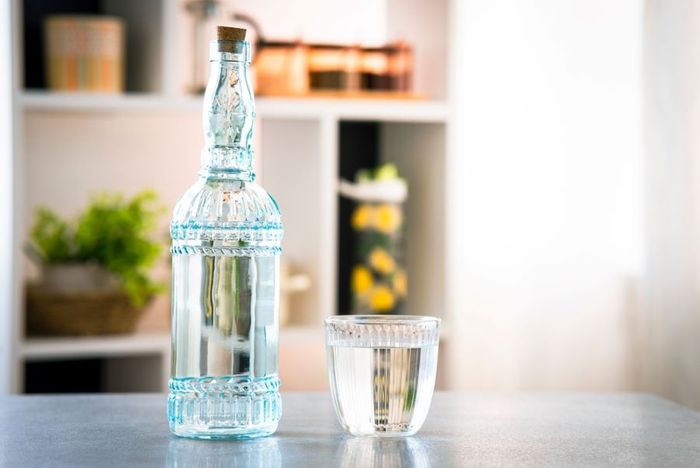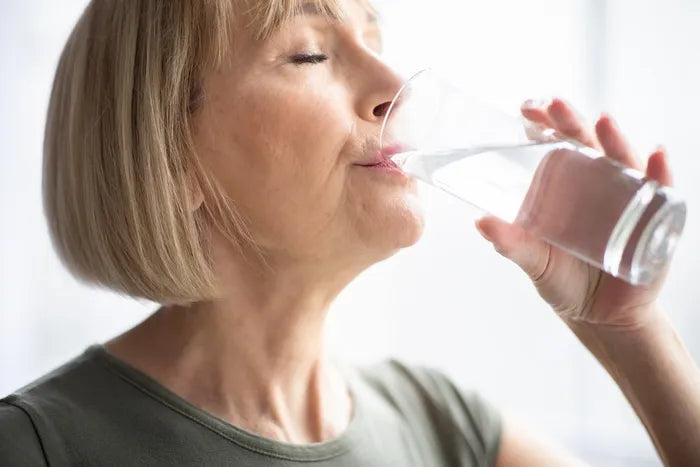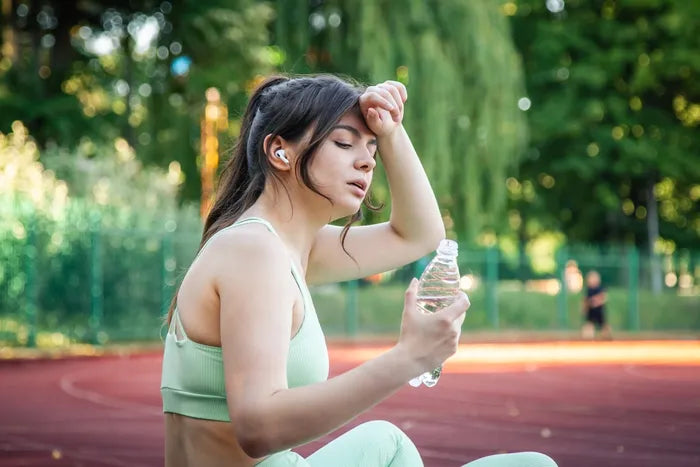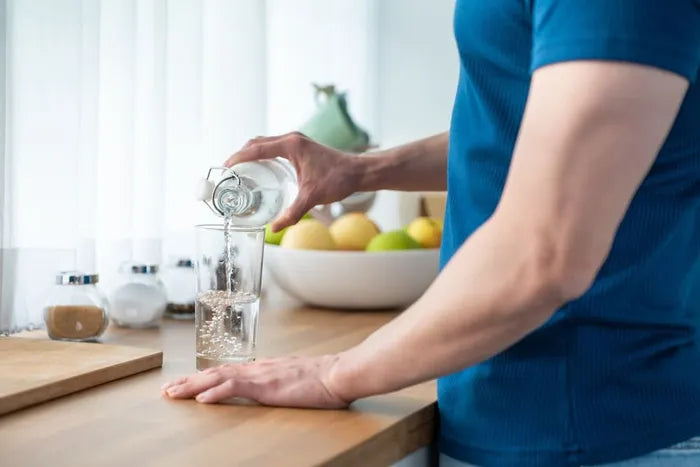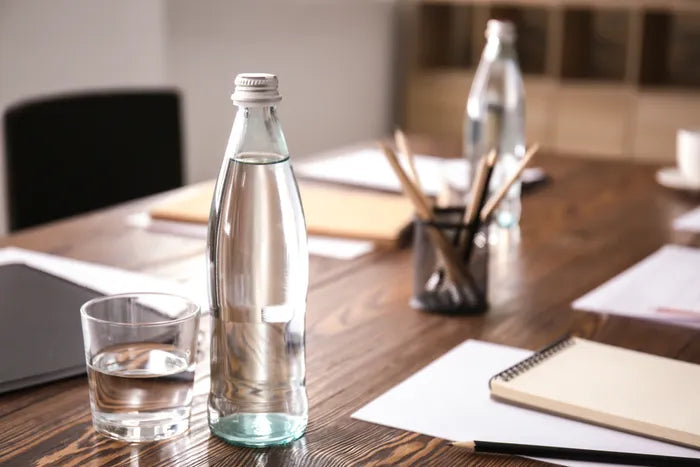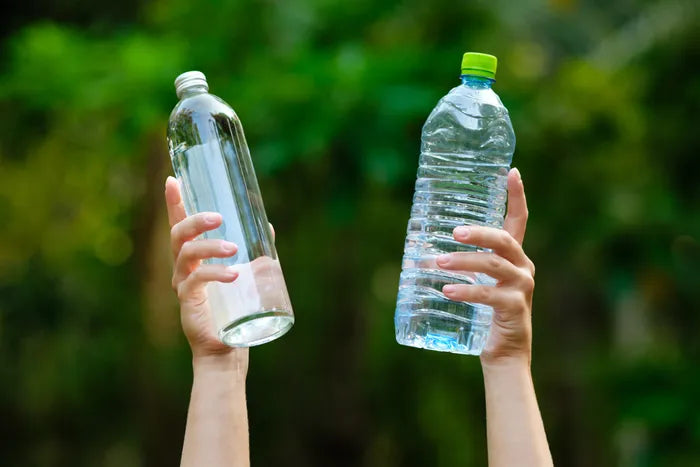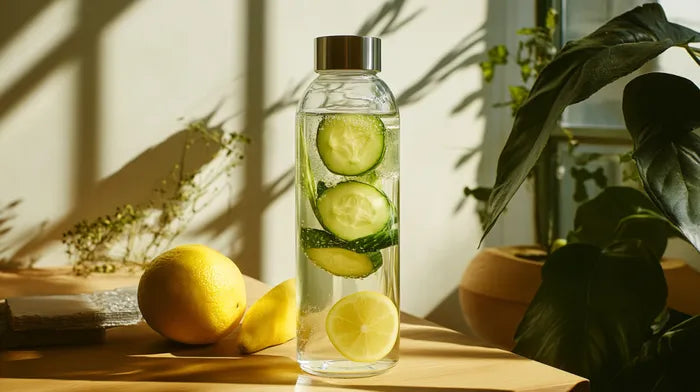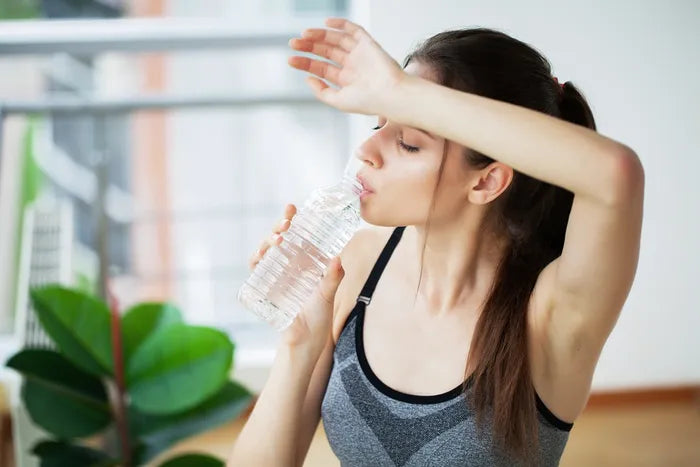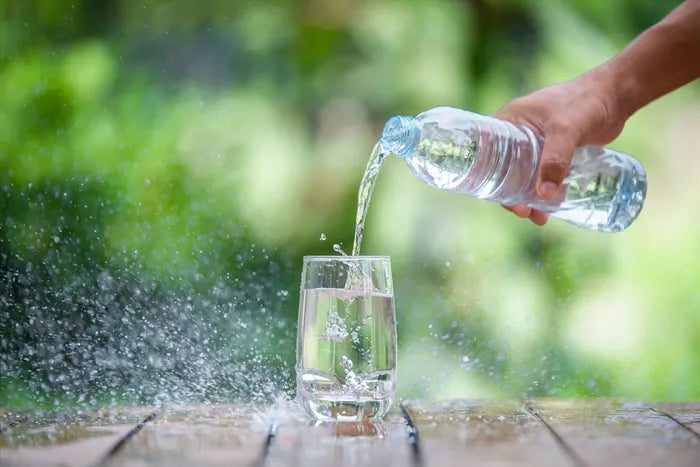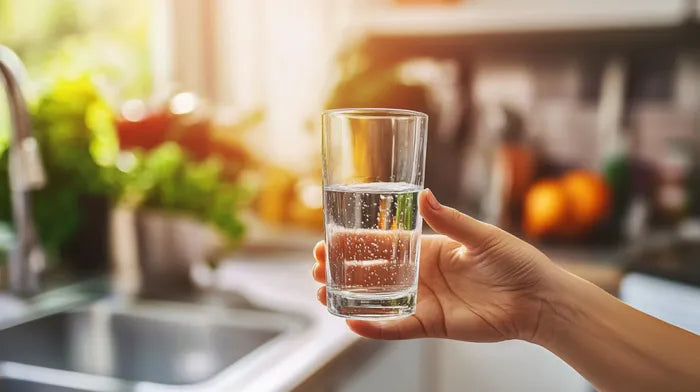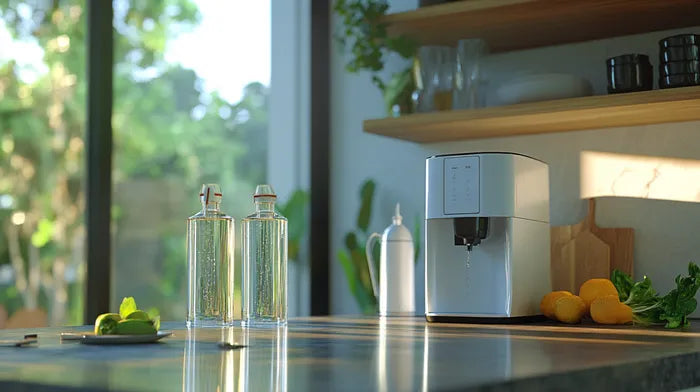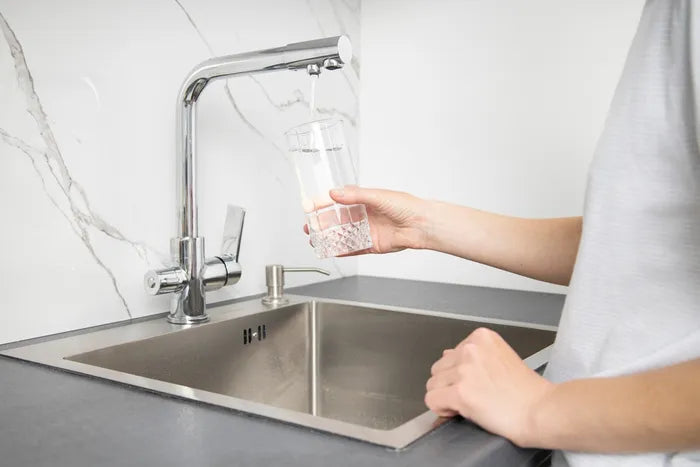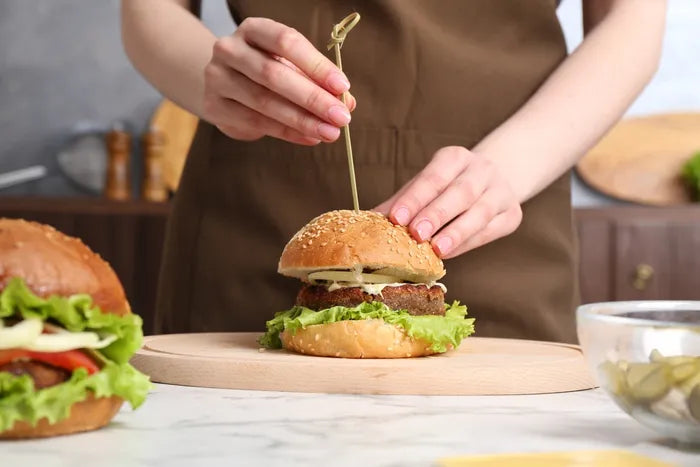Electrolyte Absorption Explained: Why Sugar Isn't Always Required
Sugar enhances electrolyte absorption through specialized gut transporters but isn't always necessary. While glucose-sodium co-transport is crucial during severe dehydration or illness, everyday hydration works fine without added sugars through alternative absorption pathways.
Published September 13, 2025

Scrolling through the sports drink aisle, you'll notice one thing: sugar is everywhere. Most electrolyte drinks are packed with it, leading many to believe you can't absorb electrolytes without glucose. But is that really true? Well, your body is smarter than marketing would have you believe.
While sugar can turbocharge electrolyte absorption in certain situations, it's not the only way your gut gets the job done. Understanding when you need that glucose boost can save you from unnecessary calories while keeping you perfectly hydrated. Here's the science behind how your body absorbs electrolytes in water, and why sugar isn't always part of the equation.
How Your Body Absorbs Electrolytes
Your small intestine is like a bustling transport hub, moving about 8-10 liters of fluid daily along with around 800 mmol of sodium, 700 mmol of chloride, and 100 mmol of potassium [1]. Most of this gets reabsorbed, leaving only about 100 mL lost in stool each day. Think of it as an incredibly efficient recycling system.
The Transport Methods
Your gut uses multiple pathways to grab electrolytes from what you eat and drink. Some require energy (active transport), others just go with the flow (passive diffusion), and some piggyback on other substances. Each electrolyte has its preferred route into your bloodstream.
Different Electrolytes, Different Rules
Sodium primarily uses specialized transporters like SGLT1, which pairs glucose with sodium for a power-packed entry into cells [2]. Chloride often just slips through tight junctions following sodium's lead. Potassium mostly rides along with water flow, while magnesium uses both passive diffusion and active channels that can be turned up or down based on your body's needs.
» Learn about the difference between electrolytes vs. minerals
What Affects Your Electrolyte Absorption
Your body's ability to grab electrolytes from your gut isn't constant; several factors can either boost or tank your absorption efficiency.
Internal Factors That Affect Electrolyte Absorption
Severe dehydration actually hurts absorption by reducing blood flow to your gut, creating a vicious cycle. Hormones like aldosterone (released when you're low on sodium) can crank up your intestinal sodium pumps.
Gut health matters too. Conditions like Crohn's disease or celiac disease damage the intestinal lining, making electrolyte absorption much harder.
External Factors That Affect Electrolyte Absorption
What you eat alongside your electrolytes matters. High-fiber foods with phytates and oxalates can bind magnesium and calcium, blocking their absorption.
Intense exercise can redirect blood away from your gut, temporarily reducing absorption efficiency. Even environmental factors like heat and altitude change your electrolyte needs, though they don't directly affect how well you absorb them.
» Find the best time to consume electrolytes based on your lifestyle
When Sugar Actually Matters for Electrolyte Absorption
Here's where sugar earns its reputation as a helper when drinking water for optimal hydration. In your small intestine, SGLT1 transporters grab glucose molecules along with two sodium ions in one coordinated move. This creates a powerful osmotic pull that drags hundreds of water molecules into your cells.
This glucose-sodium duo is the foundation of Oral Rehydration Therapy (ORT). When someone has severe diarrhea from cholera or gastroenteritis, this co-transport system often remains intact even when other absorption pathways are compromised.
Each glucose molecule essentially becomes a sodium and water delivery vehicle.
Expert Note: In everyday situations, like after a moderate workout or mild dehydration, your other absorption pathways work just fine. Sodium-hydrogen exchange, chloride-bicarbonate exchange, and passive diffusion can handle typical electrolyte replacement needs without requiring glucose as a co-pilot.
Situations Where Sugar Is Essential For Electrolyte Absorption
Now, sugar isn't just helpful in certain situations; it can be life-saving.
Severe Diarrheal Illness
When massive fluid and sodium losses threaten shock, glucose-driven sodium uptake becomes crucial. The WHO and UNICEF specifically recommend glucose-containing ORS because it can pull water back into the body even as other fluids pour out [3].
Without glucose, rehydration is dramatically slower and less effective.
Extreme Athletic Performance
During multi-hour endurance events with heavy sweating, sugar-containing drinks serve double duty, providing rapid energy while optimizing fluid uptake through that glucose-sodium partnership.
Cholera Treatment
Clinical evidence also shows that glucose-free saline solutions perform poorly in cholera treatment compared to glucose-containing ORS. In these critical situations, the glucose co-transport system can mean the difference between rapid recovery and prolonged illness.
» Explore the best electrolytes for athletes
When Do Sugar-Free Electrolytes Get Absorbed Easily
Most of the time, you don't need sugar when drinking water for cellular hydration.
- Everyday Hydration: Light exercise, warm weather, or mild thirst? Your intestines can absorb sodium and potassium through multiple pathways without needing glucose as a helper. Many electrolyte minerals or waters contain salt and potassium but no sugar, yet they hydrate effectively because other transport mechanisms handle the job.
- Alternative Approaches: Some products use amino acids or starches instead of pure sugar, which can similarly support sodium uptake. Others rely on hypotonic solutions with the right balance of sodium and potassium that create osmotic gradients without needing glucose co-transport.
- Sugar-Free Sports Drinks: These can be nearly as hydrating as full-sugar versions, provided they contain adequate sodium. For most people doing moderate exercise, the difference is negligible.
» Discover the best sugar-free electrolyte drops for active lifestyles
The Downsides of Unnecessary Sugar for Electrolyte Absorption
Adding sugar when you don't need it creates problems instead of solving them.
Unnecessary sugar spikes blood glucose and insulin levels. If the drink is too concentrated with sugar, it can become hyperosmolar and actually draw water into your gut, causing stomach upset or diarrhea, the opposite of what you want.
For someone who just needs mild rehydration, a high-sugar sports drink like Gatorade compared to water is overkill. Those extra calories add up, especially if you're drinking electrolyte beverages regularly throughout the day.
When you don't need to hydrate quickly, sugar-free electrolyte solutions often work better for your overall health and comfort.
» Learn about electrolyte risks of overconsumption
When to Pair Sugar with Electrolytes for Absorption
If you do need sugar for electrolyte absorption, timing is everything. For that glucose-sodium co-transport magic to happen, both substances need to be in your gut at the same time. Drinking them together in the same beverage maximizes the effect.
Taking sugar well before your electrolytes, or consuming it long after, doesn't provide the co-transport benefit. The glucose needs to be present while sodium is being absorbed to power that specialized transport system.
Practical Application: For athletes or anyone needing rapid rehydration, sipping a glucose-electrolyte solution throughout the event works better than chugging it all at once at the end.
» Explore how to get electrolytes while fasting
Natural Sugar Sources That Help With Electrolyte Absorption
When you do need sugar for electrolyte absorption, you don't have to rely on processed ingredients.
- Whole Fruit Options: Oranges, watermelons, and bananas contain natural sugars plus electrolytes. Bananas are particularly high in potassium. Diluted fruit juice with a pinch of salt can function like a homemade electrolyte solution, preventing electrolyte imbalances.
- Coconut Water: Naturally rich in potassium with some glucose and fructose, coconut water hydrates similarly to commercial sports drinks without artificial additives.
- Traditional Remedies: Honey or maple syrup mixed in water provides glucose-fructose and has been used as an effective ORS sugar source, especially for children. These natural sources often include beneficial micronutrients that refined sugar lacks.
Expert Note: While these options are healthier, the exact sugar and electrolyte content can be harder to measure compared to formulated products.
» Learn the best ways to add electrolytes to drinking water
Optimal Electrolyte Absorption Without the Sugar Rush
Understanding when you need sugar for electrolyte absorption, and when you don't, helps you make smarter hydration choices.
Whether you're recovering from illness or just staying hydrated during daily activities, electrolyte products like MAYU Essential Electrolyte Drops offer a convenient way to replenish essential minerals without unnecessary sugar. Remember, your body is designed to absorb what it needs efficiently.
References
Kiela, P. R., & Ghishan, F. K. (2016). Physiology of intestinal absorption and secretion. Best Practice & Research Clinical Gastroenterology, 30(2), 145–159. https://doi.org/10.1016/j.bpg.2016.02.007
Sano, R., Shinozaki, Y., & Ohta, T. (2020). Sodium–glucose cotransporters: Functional properties and pharmaceutical potential. Journal of Diabetes Investigation, 11(4), 770–782. https://doi.org/10.1111/jdi.13255
World Health Organization: WHO. (2024, March 7). Diarrhoeal disease. https://www.who.int/news-room/fact-sheets/detail/diarrhoeal-disease
Musekiwa, A., & Volmink, J. (2011). Oral rehydration salt solution for treating cholera: ≤ 270 mOsm/L solutions vs ≥ 310 mOsm/L solutions. Cochrane Library. https://doi.org/10.1002/14651858.cd003754.pub3
Disclaimer: The information published by MAYU Water is not a substitute for the expert knowledge, advice, and recommendations of trained professionals. We strongly recommend consulting with industry experts and primary or scientific sources before making any health, research-related, or other important decisions.
FAQs
Do sugar-free electrolytes work as well as regular ones?
For most everyday situations, yes. Sugar-free electrolytes work effectively through alternative absorption pathways. Sugar becomes crucial mainly during severe dehydration, illness, or extreme athletic performance.
Can I use fruit juice instead of sports drinks for electrolytes?
Diluted fruit juice with a pinch of salt can work well, providing natural sugars and some electrolytes. However, commercial formulations offer more precise electrolyte ratios for specific needs.
How much sugar is actually needed for electrolyte absorption?
When sugar is beneficial, you don't need much—WHO oral rehydration solutions contain about 20g of glucose per liter. Most commercial sports drinks contain 60-80g per liter, which is often more than necessary.
Will artificial sweeteners help with electrolyte absorption?
No, artificial sweeteners don't trigger the glucose-sodium co-transport system. They may make electrolyte drinks more palatable but don't enhance absorption like actual sugars do.












